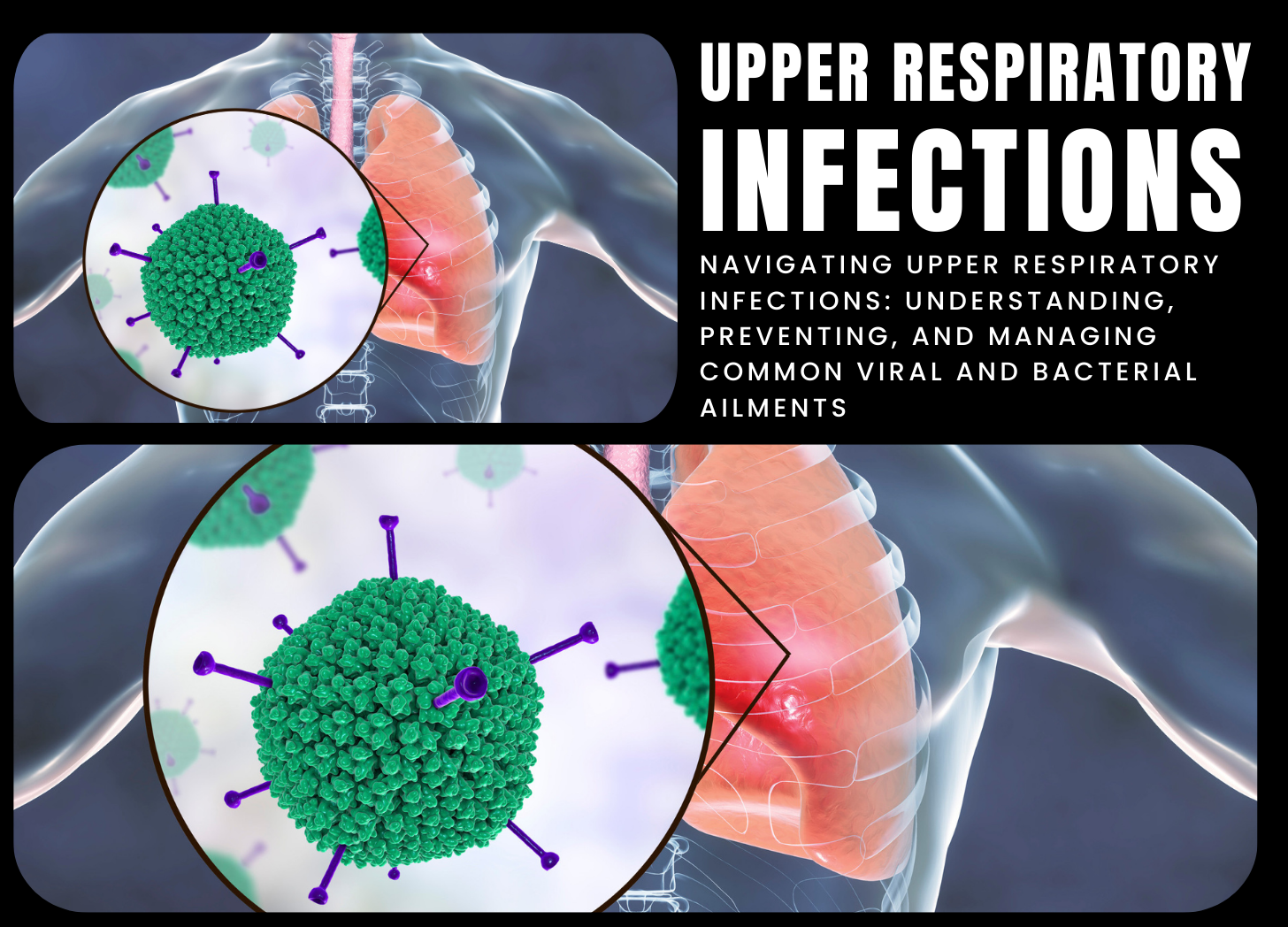Contact Us
Contact Us

Upper respiratory infections (URIs) are widespread infectious illnesses that affect the nose, throat, sinuses, and upper airways. They are mostly caused by viruses, but bacteria can also play a role in some circumstances. URIs can range from mild to severe and include the common cold, sinusitis, pharyngitis (sore throat), and laryngitis. These illnesses spread via respiratory droplets produced when an infected person coughs, sneezes, or speaks, or by touching contaminated surfaces.
Upper respiratory infections are most commonly caused by viral pathogens such as rhinoviruses, influenza viruses, respiratory syncytial virus (RSV), adenoviruses, coronaviruses (including the COVID-19 virus), and parainfluenza viruses. These viruses affect the respiratory tract’s lining, causing inflammation, congestion, and typical cold or flu symptoms such as a runny or stuffy nose, sore throat, cough, sneezing, fever, headache, and exhaustion.
In addition to viral infections, bacterial pathogens such as Streptococcus pneumoniae, Haemophilus influenzae, and Moraxella catarrhalis can cause upper respiratory infections, notably sinusitis and bacterial pharyngitis. Bacterial URIs can cause symptoms like persistent fever, severe sore throat, heavy nasal discharge, face pain or pressure, and swollen lymph nodes in the neck.
Upper respiratory infections are often diagnosed based on a clinical evaluation, medical history, and presenting symptoms. Laboratory tests such as throat swabs, nasal swabs, or viral cultures may be used to identify the causal organism, but they are not usually required for diagnosis and may not influence treatment decisions, particularly in viral URIs where antibiotics are ineffective.
Upper respiratory infections are often treated by alleviating symptoms and boosting the immune system’s ability to fight the infection. Analgesics (pain relievers), antipyretics (fever reducers), decongestants, antihistamines, and cough suppressants are all over-the-counter drugs that can help ease symptoms like fever, congestion, coughing, and sore throat. Rest, hydration, and humidified air can all help to alleviate symptoms and enhance healing.
Antibiotics may be used to treat bacterial upper respiratory infections such as sinusitis or streptococcal pharyngitis (strep throat). Antibiotics, on the other hand, are ineffective against viral URIs, and excessive usage can lead to antibiotic resistance and other negative consequences.
Upper respiratory infections must be avoided, particularly during cold and flu seasons or dangerous illness epidemics. Simple preventive measures, such as frequent handwashing with soap and water, avoiding close contact with sick people, practicing respiratory hygiene (covering the mouth and nose when coughing or sneezing), staying at home when sick, and maintaining a healthy lifestyle (including a balanced diet, regular exercise, and adequate sleep), can all help reduce the risk of URIs.
To summarize, upper respiratory infections are highly contagious disorders caused by viruses or bacteria that affect the nose, throat, sinuses, and upper airways. Most URIs are minor and self-limiting, but they can cause discomfort and annoyance, especially in vulnerable populations including small children, the elderly, and those with compromised immune systems. Individuals can reduce the burden of URIs and maintain respiratory health by practicing good hygiene, implementing preventative measures, and obtaining appropriate medical care as needed.
References:
1.Centers for Disease Control and Prevention. (2022). Common Colds: Protect Yourself and Others. Retrieved from https://www.cdc.gov/features/rhinoviruses/index.html
2.Mayo Clinic. (2022). Upper Respiratory Infection (URI). Retrieved from https://www.mayoclinic.org/diseases-conditions/common-cold/symptoms-causes/syc-20351605
Post a Comment